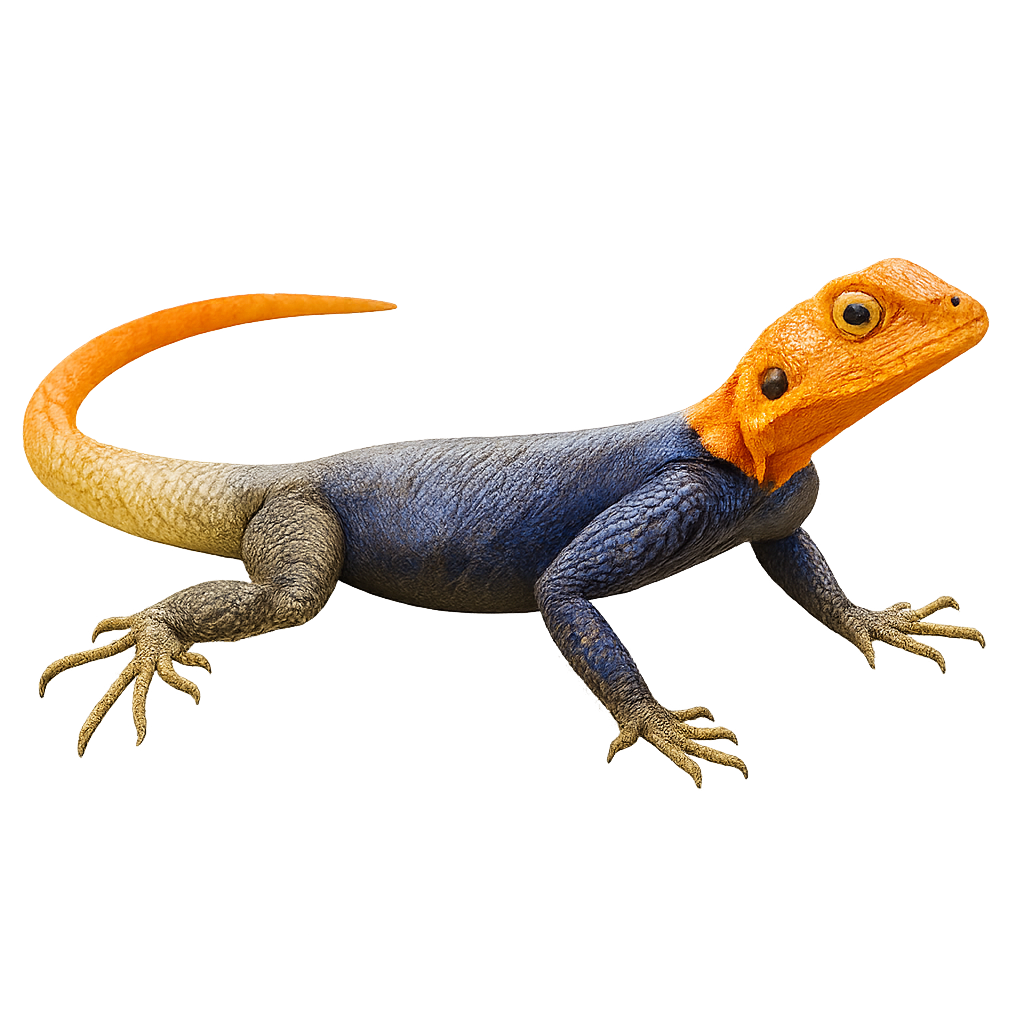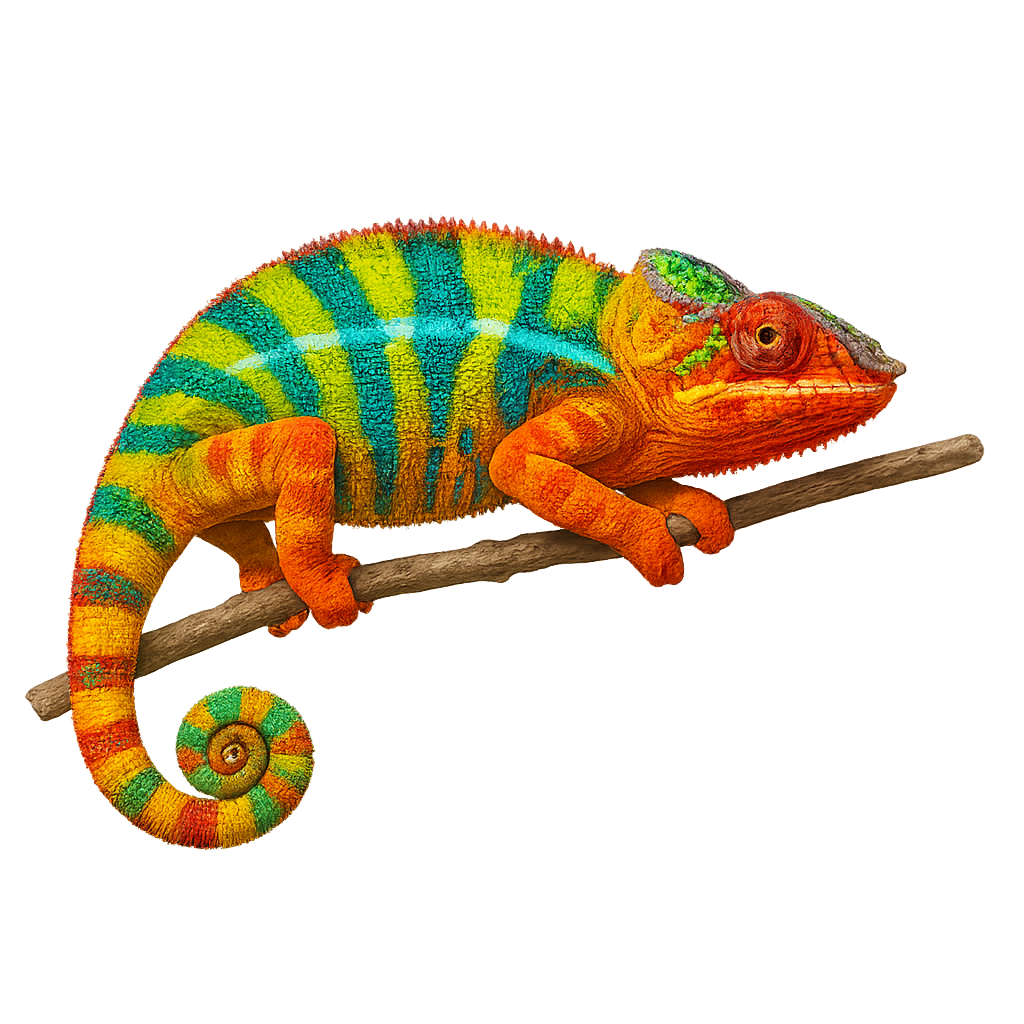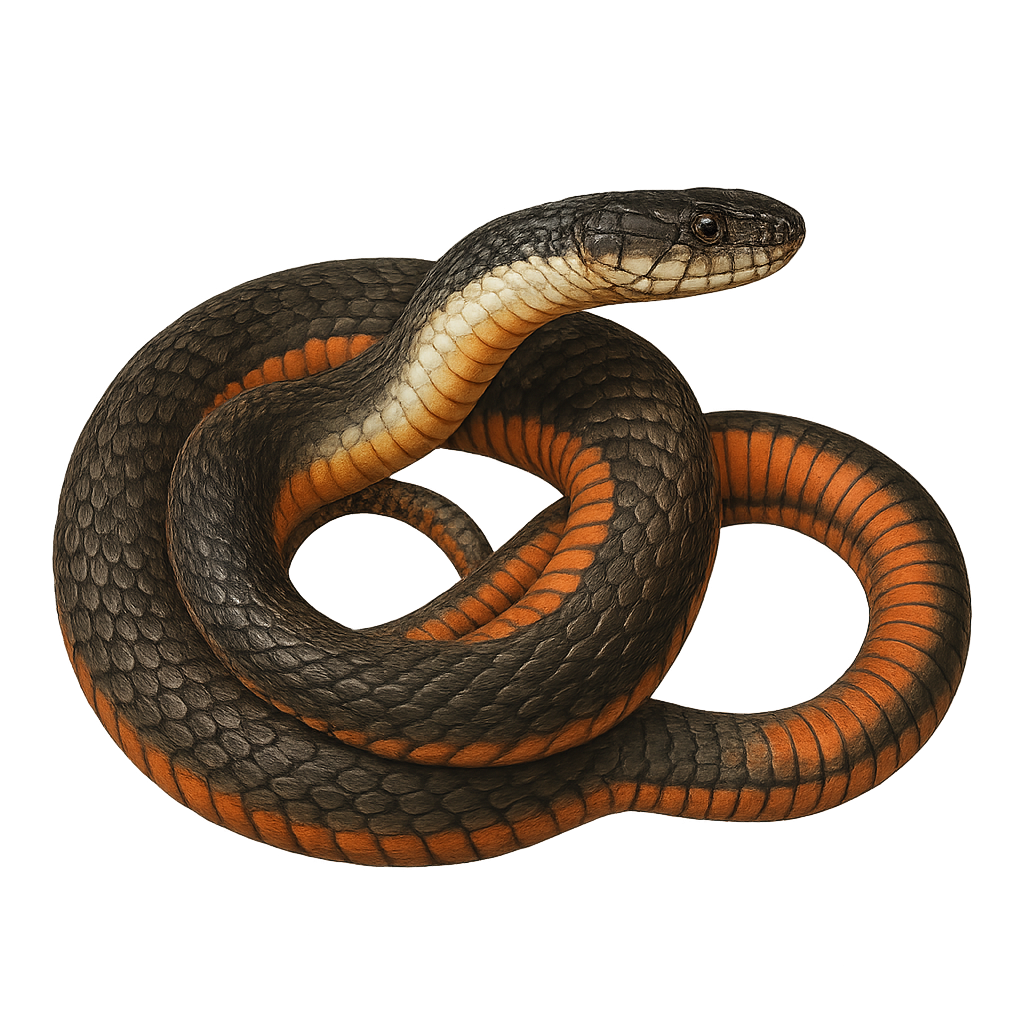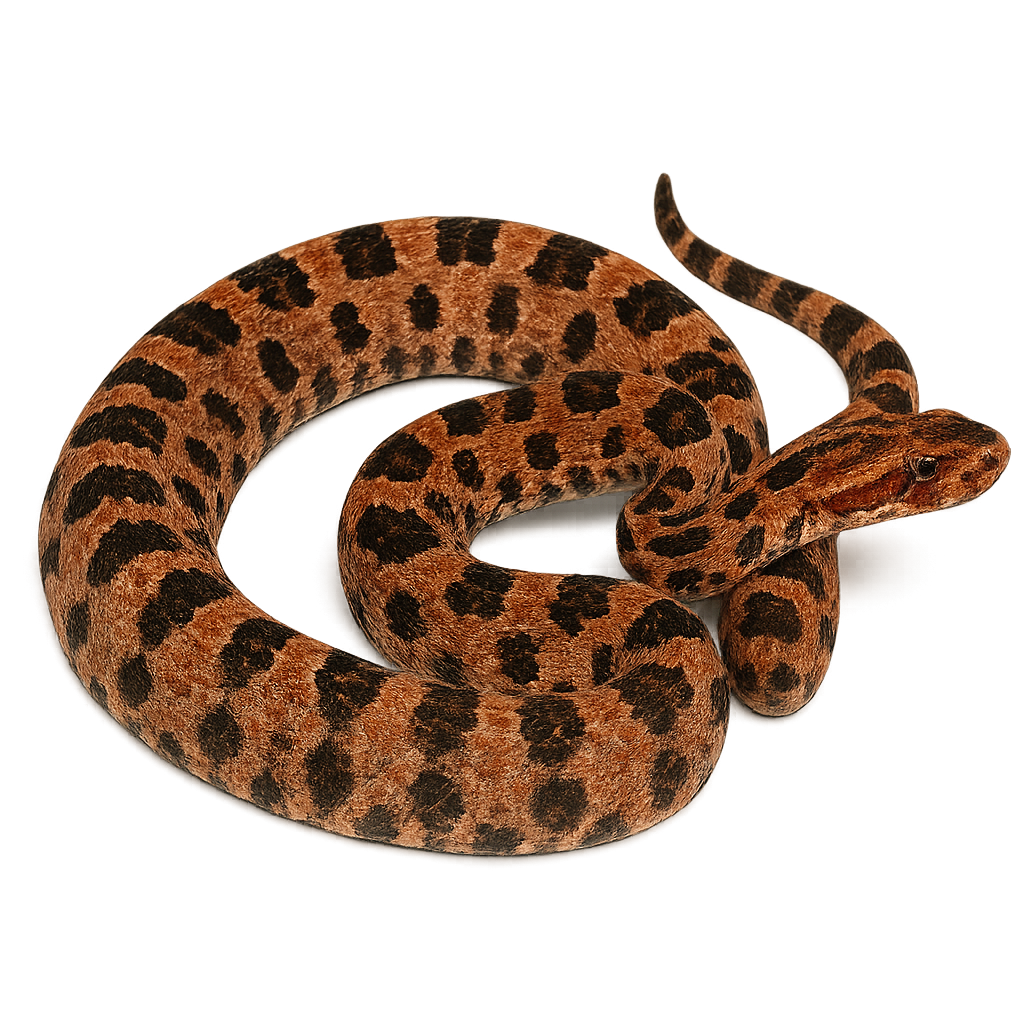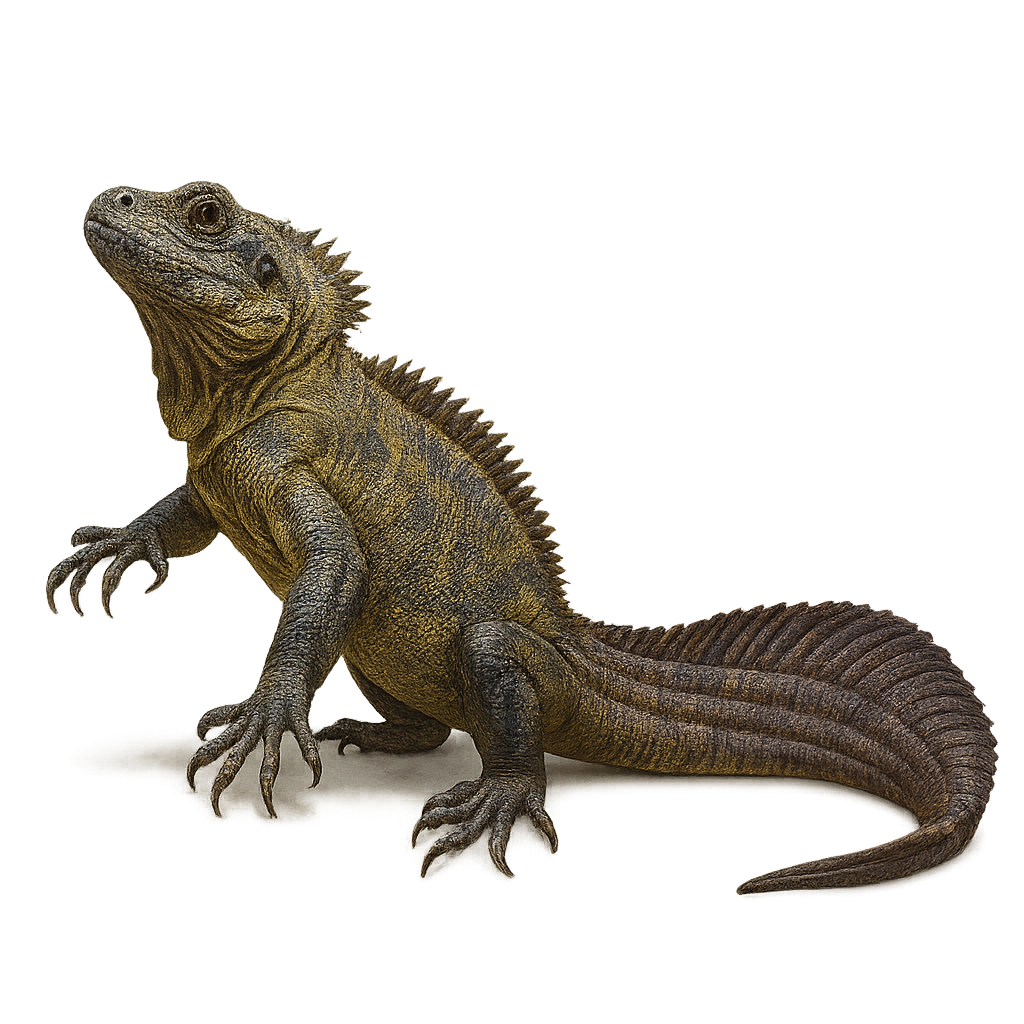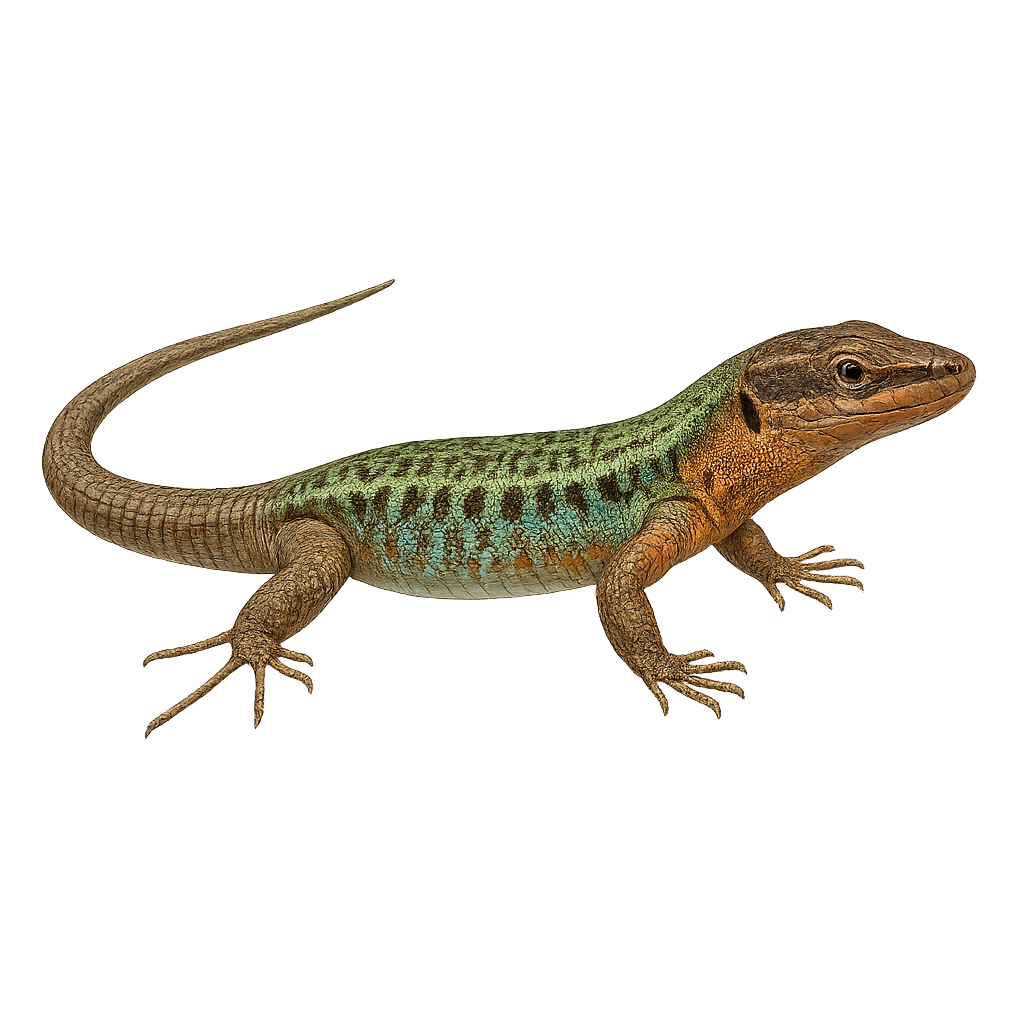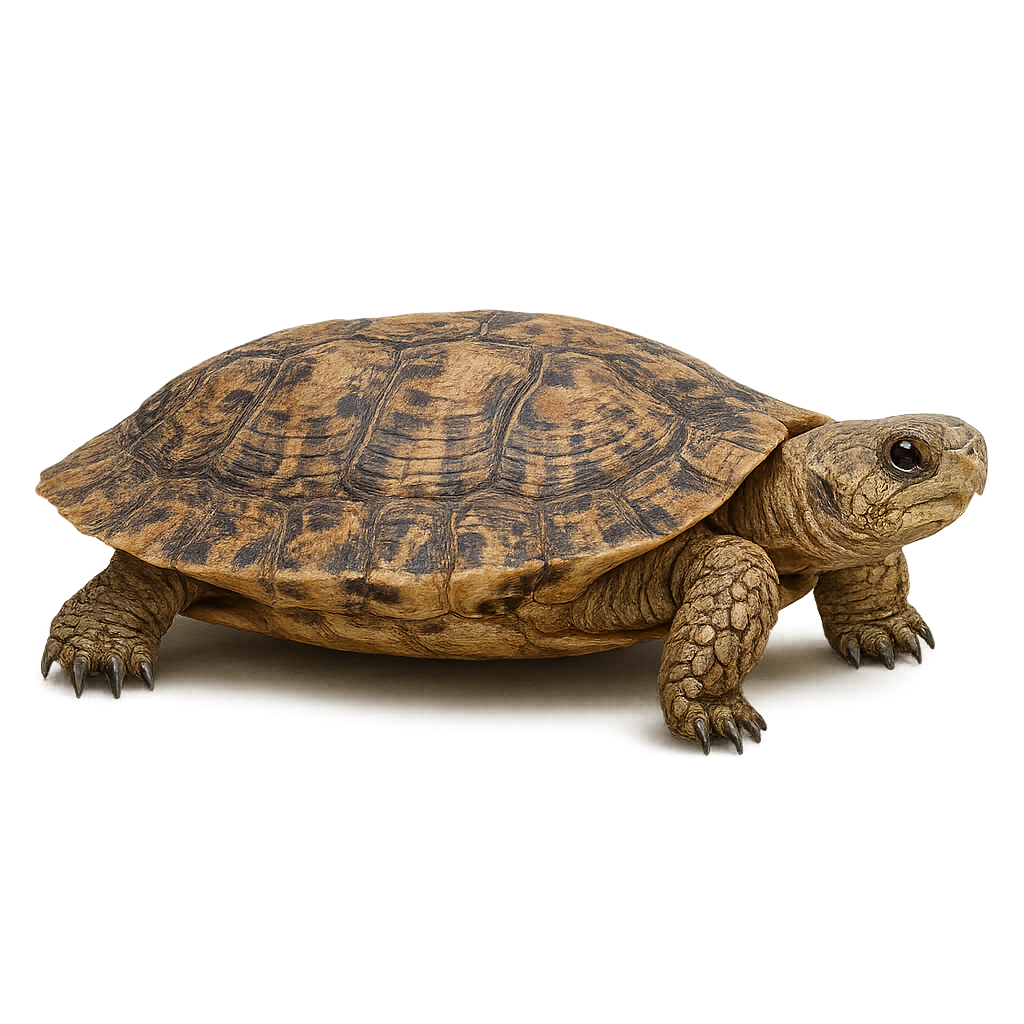The Painted Agama, Agama picticauda, is a colorful lizard native to West Africa. It is known for its vividly patterned tail and bright colors, ranging from brown to red, with hints of blue and green. This lizard is often found in rocky areas and savannas, basking in the sun. It is diurnal and primarily feeds on insects. Males are generally more colorful than females, especially during the breeding season. Although relatively tolerant of human presence, it prefers to keep its distance. Its ability to change color depending on its mood or environment is fascinating and makes it popular among reptile enthusiasts.
The Parson's chameleon, or Calumma parsonii, is one of the largest chameleons in the world, native to Madagascar. It is renowned for its impressive size, sometimes reaching up to 70 cm in length. Its skin displays a range of colors from green to blue, occasionally with hints of yellow or orange, allowing it to blend into its forest environment. This chameleon is primarily arboreal, living in the island's humid forests. It is known for its extremely long tongue, which it uses to catch insects from a surprising distance. Although it is a solitary animal, it is relatively tolerant of human presence, making it a favored subject for naturalists.
The Panther Chameleon is an iconic species from Madagascar, famous for its vibrant colors and impressive patterns that vary depending on its mood and environment. This chameleon is primarily arboreal, living in the humid tropical forests of the island, where it hides among branches and foliage. It is also known for its ability to change color, an adaptation that helps it camouflage but is also used during fights between males or to attract a female. Although generally calm, it can become more active during the breeding season.
The Nerodia erythrogaster, commonly known as the plain-bellied water snake, is a non-venomous aquatic snake found primarily in the southeastern United States. It is recognizable by its reddish or orange belly, contrasting with its typically brown or dark gray back. Measuring between 60 and 120 cm in length, it is often seen near freshwater bodies such as marshes, rivers, and lakes. Although primarily aquatic, it can also be found on land, especially when basking in the sun. It primarily feeds on fish and amphibians. Its breeding season occurs in spring, and it gives birth to live young, usually between July and September.
The Sistrurus miliarius, commonly known as the pygmy rattlesnake, is a small venomous snake, typically measuring between 40 and 60 cm. It is recognizable by its varied coloration, ranging from gray to brown, with diamond-shaped or banded patterns. Its head is triangular, and it has a small rattle at the end of its tail, although this is often less noisy than that of other rattlesnakes. It is primarily found in the southeastern United States, inhabiting diverse environments such as pine forests, marshes, and grasslands. Although venomous, its bites are rarely fatal to humans but still require immediate medical attention.
The Hydrosaurus pustulatus, commonly known as the Philippine Sailfin Lizard, is a fascinating reptile endemic to the Philippine islands. This lizard is famous for its spectacular dorsal crest resembling a sail, used to impress rivals and attract mates. It primarily inhabits tropical rainforests and riparian zones, where it spends much time swimming. Measuring up to a meter in length, it is mainly herbivorous, feeding on leaves, fruits, and flowers, though it may occasionally consume insects. This lizard is diurnal and spends most of its time basking in the sun to regulate its body temperature. Although relatively tolerant of human presence, it remains cautious and quickly flees when threatened.
The Peloponnese Wall Lizard, scientifically known as Podarcis peloponnesiacus, is a medium-sized lizard endemic to the Peloponnese region of Greece. It typically measures between 18 and 25 cm in total length, including the tail. Its coloration ranges from brown to green with distinct dorsal patterns, allowing it to blend seamlessly into its natural rocky habitats. Preferring rocky terrains, stone walls, and shrubby areas, it is primarily active during the day, basking in the sun and feeding on insects, spiders, and occasionally small fruits. Known for its speed and agility, this lizard is adept at evading predators.
The pancake tortoise, or Malacochersus tornieri, is a fascinating species of terrestrial tortoise native to East Africa, primarily in Tanzania and Kenya. It is distinguished by its exceptionally flat and flexible shell, which allows it to slip into rocky crevices to protect itself from predators. This unique adaptation is essential for its survival in the arid and rocky habitats it frequents. Typically measuring between 15 and 18 cm in length, this tortoise has a brownish coloration with irregular patterns that provide excellent camouflage. It is primarily herbivorous, feeding on various succulent plants and dry vegetation. Unfortunately, the pancake tortoise is threatened by habitat destruction and the illegal pet trade, leading to its classification as a vulnerable species by the IUCN.
The painted turtle, Chrysemys picta, is a widely distributed aquatic species in North America. It is characterized by its smooth, flat shell adorned with red, yellow, and black patterns. The edges of its shell often feature red lines, while its skin displays yellow and red stripes. Typically measuring between 10 and 25 cm, it is well adapted to aquatic environments such as ponds, lakes, and marshes. It primarily feeds on aquatic plants, insects, small fish, and crustaceans. The painted turtle is known for its sunbathing behavior, often seen basking on rocks or logs to regulate its body temperature.


